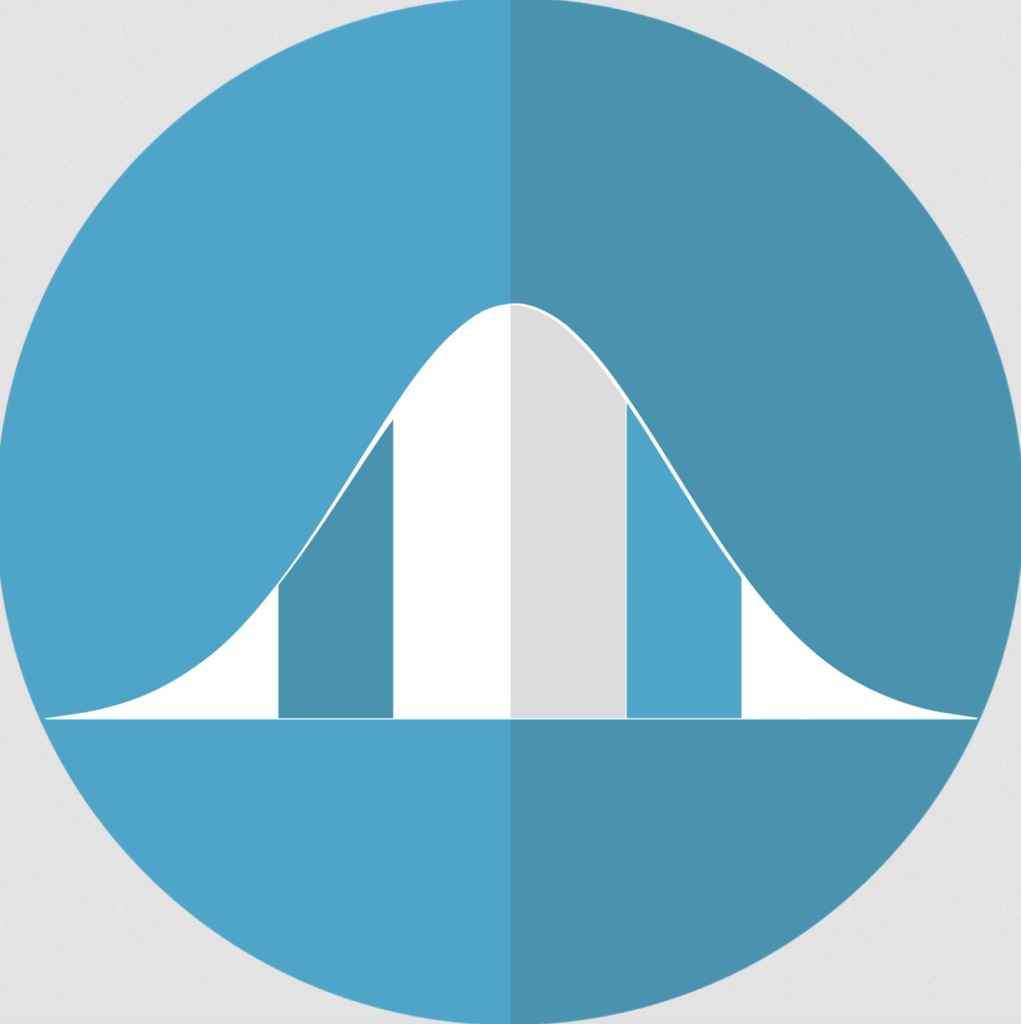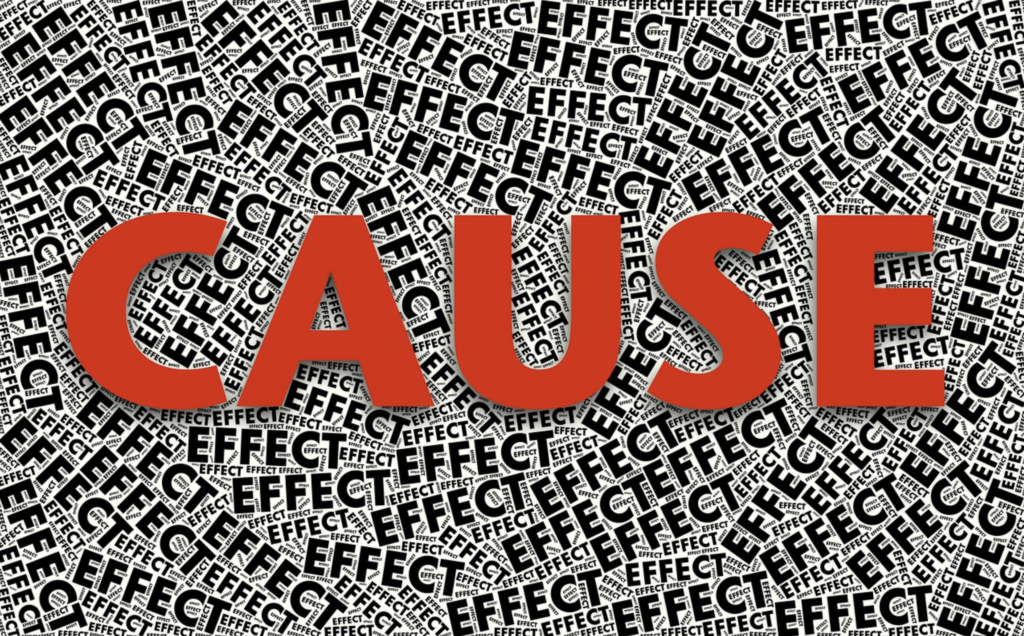Why You Should Consider a Quantitative Dissertation (Even If You Hate Statistics!)
Do you recoil in horror at the sight of a normal curve? Do you cringe in fear at the mere mention of a p-value? Well, perhaps your aversion to statistical analysis is not so visceral, but as dissertation consultants we know that some people are really comfortable with statistics, and some are…less so. If you find yourself in the latter camp, take heart: The honest truth is that even seasoned researchers seek out statistical consulting.

Quantitative research methods offer far too many powerful possibilities to ignore as you consider choices for your dissertation methodology. Although the technical aspects of statistical analysis may be tricky to get through, many researchers seek out support for the analysis stage of their studies. So, not being a math genius shouldn’t prevent you from doing high-quality quantitative research—it’s most important to understand the logical concepts at work in different quantitative approaches. In this article, we’ll go over concepts and examples to help you think over whether a quantitative method might be right for your dissertation.
Why Consider a Quantitative Research Method?
Even if you are math-averse, you would be wise to at least consider taking a quantitative direction for your dissertation. This is because there are distinct advantages of this method that qualitative research simply does not offer. Because the heart of quantitative research is the statistical analysis process, this form of research allows you to answer research questions that revolve around relationships between variables. You can answer questions about differences between variables, or you can address questions about how multiple variables change together. Although you can still explore questions related to those variables using qualitative research methods, qualitative analysis does not allow you to draw conclusions about the relationships between variables.
Let’s consider a hypothetical example. Suppose you want to understand the effects of a new training program for nursing assistants on signs and symptoms of heart failure. If you used a quantitative method, you could measure your participants’ baseline awareness directly using a knowledge test; then, after the training program, you could measure their awareness a second time using the same test. By conducting statistical analysis on the results, you could determine whether their level of awareness was significantly higher after the training program.

Now, on the other hand, imagine that you wanted to evaluate the effects of the same training program using a qualitative research method. You could certainly interview participants about it, but this wouldn’t tell you conclusively whether the training program improved their scores on the knowledge test. This isn’t to suggest that qualitative analysis is not useful—it could yield very informative findings related to what participants found most helpful, what aspects of the training program they didn’t like, and so on.
But, if you’re an administrator who is considering whether to implement the program, you’re probably going to be most interested in whether the training program actually increases nursing assistants’ awareness of the signs and symptoms of heart failure. This illustrates one of the clear advantages of quantitative methods. In subsequent sections, we’ll go over some of the most popular quantitative approaches our dissertation consulting clients choose when pursuing a quantitative pathway.
Using an Experimental Design
The big attraction of the experimental design is that you can determine causality between variables. In other words, you can show that one “thing” caused another. An experimental research design will require considerable time and planning, but our statistical consultants suggest that it’s well worth the effort because of the nature of the results that you can obtain.

To ground this in an example, let’s return to our hypothetical investigation of the heart failure training program for nursing assistants. If you wanted to demonstrate the effectiveness of the training program, it would be ideal if the results of your statistical analysis revealed that the program had caused improvements in nursing assistants’ knowledge test scores. An experimental design is perfect for this type of question. Here are the elements to include (Rogers & Revesz, 2020):
- Manipulation: Our statistical consultants emphasize that a key part of the experimental approach is manipulation of the independent variable—this variable is the one that is expected to have an effect on the other (in our example, it’s the awareness training program). Manipulating this variable just means that you have control over whether participants are exposed to the training or some other condition.
- Control: In your manipulation of the independent variable, you’ll need to make sure that some participants are not exposed to it. This is your control group, and it allows you to compare the outcome of a treatment (e.g., the training program) with the outcome of an unrelated condition (e.g., going about their workdays as usual).
- Random assignment to groups: Another important feature of experiments is randomization. This means that you randomly assign different participants to either your treatment group (the training program, in our example) or the control group for your dissertation. This helps to ensure that any differences you see in the outcomes are truly related to the training program. Consider what might happen if you didn’t randomly assign participants—if you maybe just let them choose a condition. You might find that the nursing assistants in the heart failure class increased their awareness scores more than those who chose to go about their workdays as usual. But what if the participants who chose the heart failure seminar were just more interested in the topic? Could that intrinsic interest have an effect on how much people learn? Absolutely, and this is what makes random assignment so important: Every participant has an equal chance of being in the treatment or control group.

Conducting a Quasi-Experimental Study
If you like the idea of an experimental study but wouldn’t be able to pull off the full set of requirements, you’re in good company. For example, what if you wanted to use statistical analysis to evaluate the effects of the heart failure training program in your workplace, but all of the nursing assistants were required to take it? This would make randomizing your participants to groups impossible, so an experiment would not be an option.
This type of obstacle to a true experimental design is fairly common among our dissertation assistance clients. In real-world settings, you often don’t have the option of assigning participants to groups. This is where the quasi-experimental design comes in handy (Rogers & Revesz, 2020). As with an experiment, a quasi-experiment allows you to use statistical analysis to assess the effects of an independent variable (such as our training program) on outcomes (like knowledge test scores). The main difference is that you don’t randomize participants to conditions in a quasi-experiment. Here are the elements of a quasi-experiment:
- Measure the effects of a treatment: To conduct the statistical analysis for a quasi-experiment, you need to have a numerical measurement of the effects of the independent variable (such as our training program). Our statistical consultants suggest that administering a pre-test and post-test is a useful and straightforward way of obtaining such measurement.
- Comparison group(s): You might even have the option of using a comparison group, and if so, it would help to strengthen your dissertation greatly. For example, maybe you learn that another nursing facility also provides heart failure awareness training but that they use a different program. You could use them as a comparison, provided that they use the same knowledge test.

Implementing a Causal-Comparative Design
What we know from working with so many of our dissertation assistance clients is that busy, working adult students often don’t have the time or resources to set up studies with treatment groups, comparison groups, and multiple measurements. But, what if you still have your heart set on using statistical analysis to evaluate differences between key outcomes? Our statistical consultants suggest that you might then consider a causal-comparative design.
With a causal-comparative study, you evaluate differences in key variables across groups that already exist (Salkind, 2010). To clarify, let’s ground this in our example. Imagine that you’re working in a facility that provides heart failure training to nursing assistants, and you know of another facility that does not provide such training. To complete a causal-comparative statistical analysis, you would compare a similar outcome measure from both facilities.
In this case, you might administer your knowledge test to nursing assistants from both facilities and then conduct statistical analysis to determine whether there is a significant difference in average scores. If your facility’s average score was higher, you could reasonably suggest that the awareness training your facility provides was the reason for this difference.
Applications of a Correlational Approach
As quantitative and qualitative researchers, we are all naturally concerned with how different phenomena influence one another. This is because in one way or another, we are all trying to figure out ways to make the world a better place through our research, and understanding which factors lead to the best outcomes is an integral part of this process. Indeed, using statistical analysis to determine causality between variables in your dissertation would clearly help you to design better educational programs, public policy, or work practices.

But what if it’s just not feasible to measure outcomes based on treatments or groups? Real life is messy, and many variables don’t fit neatly into a research design that is built around causality. This reality is what makes correlational research so popular among our dissertation consulting clients—and among researchers as a whole! Correlational studies allow you to determine whether two or more variables change together in predictable ways (Salkind, 2010). Stated differently, using this approach for your dissertation will help you to see if an increase in one variable tends to be accompanied by an increase or decrease in another variable.
Going back to our hypothetical study of nursing assistants, imagine that you were interested in the effect of work experience instead of the training program on heart failure awareness. Obviously, you can’t randomly assign people to groups based on work experience; this is a real-life factor that is beyond your control. Theoretically you could assign nursing assistants to a “high” and “low” work experience group and then compare their knowledge scores, but this wouldn’t really be too informative, would it? Years of experience could range from less than 1 year to 30 years or more! Given this, how do you determine a meaningful cutoff for groups, and what use would such groupings have for, say, managers in charge of staffing assignments?
What would be far more useful would be to use statistical analysis to determine whether knowledge increased as years of experience increased—if these two variables are correlated, in other words. Now, you’ve undoubtedly learned that correlation does not prove causation, and this is true. But, it does provide evidence that specific variables change together, which might in this case allow managers to make a reasonable assumption that more experienced nursing assistants have higher levels of heart failure awareness. So, this is still a very valuable form of statistical analysis.

Conclusion
If you don’t take to statistics too readily, don’t worry. There is still potential for you to implement a great quantitative dissertation, even if you’re not an award-winning statistician. It’s most important to understand the types of questions you can answer with a quantitative method, as support from your dissertation committee and/or statistical consultants can help you to manage the technical aspects of your study. We hope that this article has been helpful to you in weighing your quantitative options, and we encourage you to call or email any time for guidance on your research. We would love to help you along in your dissertation journey!
References
Rogers, J., & Revesz, A. (2020). Experimental and quasi-experimental designs. In J. McKinley & H. Rose (Eds.), The Routledge Handbook of Research Methods in Applied Linguistics (pp. 133-143). Routledge. https://doi.org/10.4324/9780367824471
Salkind, N. J. (2010). Encyclopedia of research design. Sage Publications. https://doi.org/10.4135/9781412961288.n96